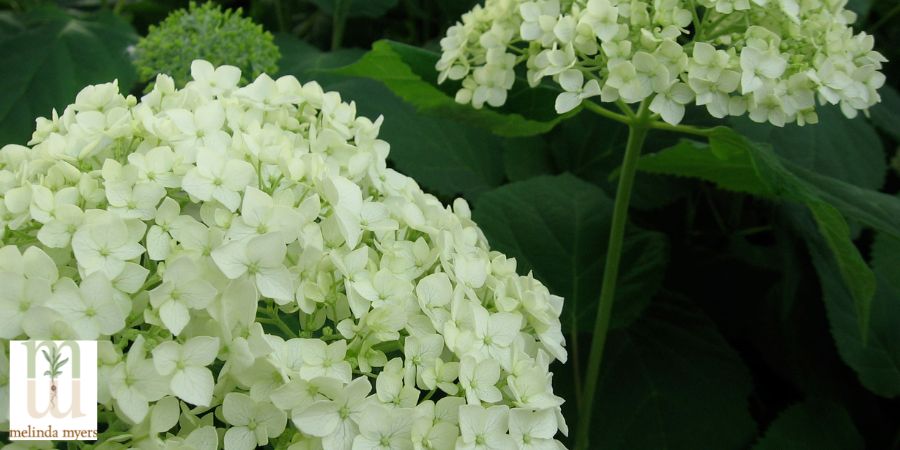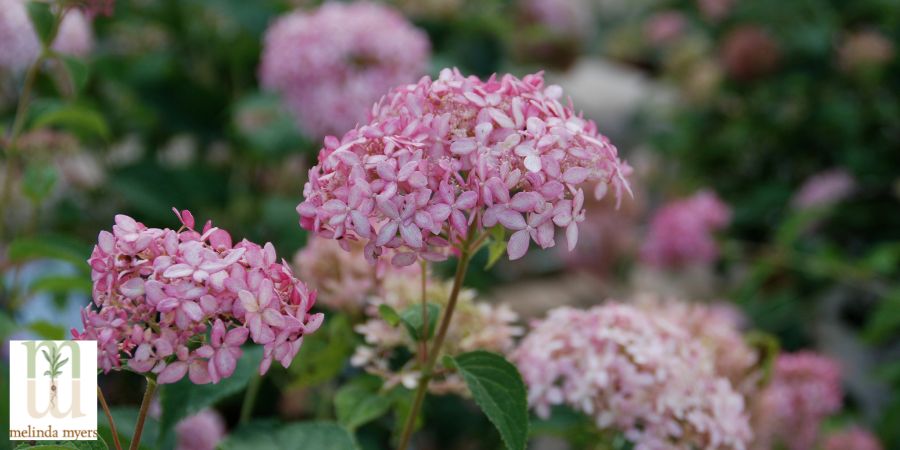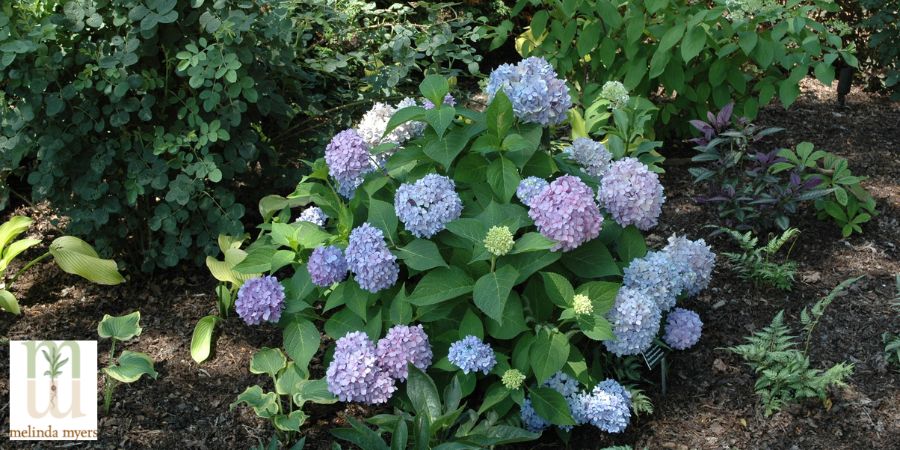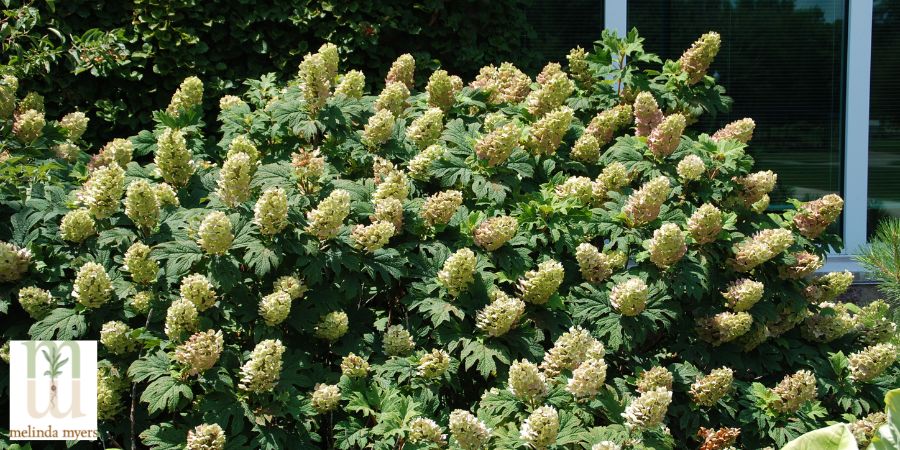Pruning and Care of Hydrangeas
- horticulturist and gardening expertJune 11, 2022
Hydrangeas are filling our landscapes. This versatile group of low-maintenance shrubs brightens shady spots, adds color to the summer garden, and combines nicely with perennials and other shrubs. Caring for these plants is pretty easy, even pruning, once you understand how and when these plants flower. So before breaking out the pruners take a few minutes to review a few basics. You’ll be glad you did when your plant looks beautiful and is covered in flowers.

Hydrangea arborescens
Smooth/Annabelle type Hydrangeas (Hydrangea arborescens)
Many of us grew up enjoying the big round white flowers of smooth hydrangeas. These often filled those shady spots in our parents' or grandparents' yard. These plants, often called Anabelle-type hydrangeas, are native from New York to Iowa and South to Florida and Louisiana. Their adaptability, low maintenance, and hardy (zones 3 to 9) nature have helped them maintain their popularity.
These flowers form on new growth and do not change color with a change in soil pH. Most have large white flowers but recent introductions including the Invincibelle Spirit cultivars and Incrediball Blush added pink to the color choices. Sorry, there are no blue Annabelle-type hydrangeas available.
Smooth hydrangeas prefer partial shade but will tolerate full sun as long as the soil is kept moist. Spreading a layer of organic mulch over the soil surface will help keep the soil cool and moist throughout the growing season.

Invincibelle Spirit Pasquesi
Since the flowers form on new growth after the stems start leafing out, you can prune them anytime the plants are dormant. I prefer late winter or early spring after the worst of winter weather has passed. This way I can enjoy the dried flowers in the winter garden. Others prune in fall for a neater and tidier appearance in the winter landscape.
Prune all the stems back to 12 to 15” above the ground. Then prune half of these back to ground level. This will encourage new growth at the base of the plant and the older stems will help support the new growth reducing the risk of flopping stems.
You can also prune all the stems back to just a few inches above the soil surface. This is much quicker but may result in more floppy growth.
Panicle Hydrangeas (Hydrangea paniculata)
You’ll find a wide range of panicle hydrangea cultivars from the small Bobo at 2-3 feet to the large 6 to 10 feet or taller Limelight. This hydrangea prefers full sun but will tolerate some shade. It also prefers moist well-drained soil and is hardy in zones 3 to 8 and to 10 on the West Coast.
Panicle hydrangeas also flower on new growth and only require minimal pruning. Over pruning can result in floppy stems. Prune them anytime during the dormant season starting several weeks after the leaves have dropped until new growth begins in early spring.
Start by removing any thin, spindly, crossing, or damaged branches. Reduce the overall height by no more than one-third. So if your plants are 6 feet tall you will remove no more than 2 feet.
Big leaf hydrangeas/ Mophead/ French (Hydrangea macrophylla)
These are the beautiful pink and blue flowers often seen growing in southern and Pacific northwest gardens in zones 6 to 9. They form their flower buds the summer before they bloom. If you garden in colder climates, you may have tried growing these and ended up with nothing but leaves.
New repeat blooming cultivars like the Endless Summer series, Twist-n-Shout, and Let’s Dance form flowers on old wood and again on the current season’s growth. This extends the floral enjoyment for gardeners where these plants reliably bloom and give those of us in colder climates a chance to enjoy these flowers.

Endless Summer
Repeat blooming hydrangeas have not always lived up to their reputation in colder regions. I find applying Milorganite slow-release fertilizer in the spring and keeping the soil consistently moist, not soggy wet, throughout the growing season promotes flowering. Research found that when the microorganisms released the nutrients from the Milorganite pellets some of the phosphorus and potassium bound to the soil was made available to the plants. Phosphorus promotes flowering while potassium promotes hardiness and disease resistance. Almost everyone I shared this recommendation with has seen improved flowering.
Grow bigleaf hydrangeas in full sun to part shade with moist well-drained soil. Those in warmer regions will have better success when providing these plants with a bit of afternoon shade. Mophead hydrangea will have blue flowers in acidic (low pH) soils and pink blooms in alkaline or high pH soils. It is actually the presence or absence of aluminum that determines the flower color. Aluminum is available in acid soils and results in blue flowers. It is difficult to change soil pH and maintain it over time. Have a soil test before attempting to change the soil pH. Or better yet, embrace the color that naturally occurs in your soil. It is a much easier solution.
Providing plants with winter protection in the northern range of hardiness can help increase flowering. Protect the flower buds that formed on the stems in late summer with a winter mulch. Encircle the plant with hardware cloth sunk several inches into the ground. This will help protect the plant from hungry critters. Once the ground freezes, fill the cylinder with straw or evergreen boughs. Remove the mulch as temperatures hover above freezing in the spring.
Since these bloom on old growth, most of the pruning is done after flowering. In spring just remove any dead or damaged stems for healthy growth or back to ground level. This may mean pruning all the stems back to ground level in colder climates.
After the plants finish flowering you can remove up to one-third of the stems to ground level on older plants as needed. Be sure to leave some of the old productive stems and strong new growth. You can remove faded flowers being careful not to damage flower buds that are forming for next year’s display.
Pruning right after flowering also avoids pruning out flower buds forming on the new growth of repeat blooming varieties. Follow the same pruning regimen for lacecap hydrangeas (Hydrangea macrophylla var. normalis)
Northern gardeners struggling to get their mophead hydrangeas to flower may want to check out Tim Boebel’s website Hydrangeas in the North. He shares his pruning strategy for getting mophead hydrangeas to flower in zones 5 and colder.

Hydrangea quercifolia
Oakleaf hydrangea (Hydrangea quercifolia)
This hydrangea provides year-round beauty with attractive foliage, fall color, flowers, and orange exfoliating bark during the dormant season. It grows well in full sun to part shade and moist well-drained soil.
Like mophead hydrangea, it forms its flowers on stems the previous season. Fortunately, it needs minimal pruning. Just remove any winter-damaged stems in early spring. Wait until right after flowering if additional pruning is needed to maintain the desired shape.
Climbing hydrangea (Hydrangea anomala subsp. petiolaris)
The climbing hydrangea adds a different dimension to your hydrangea collection. It clings to rough surfaces with root-like holdfasts. Grow it in full sun or shade with rich moist well-drained soil. Be patient as it can take years before the first flowers appear. But the attractive dark green leaves that may turn yellow in fall and orange exfoliating bark immediately add year-round interest to the garden.
Climbing hydrangeas are slow growers and need very little pruning. Flower buds form during the previous season’s growth so prune right after the flowers fade. Limit pruning to wayward, damaged, or rubbing branches. Make cuts back to a healthy bud or adjoining branch. Avoiding excessive pruning can greatly reduce flowering for several years.
It sounds more complicated than it really is. Just make a note on your calendar as a reminder of when to prune the various hydrangeas in your landscape. The worst that can happen is you have fewer or no flowers that year. Once you make that mistake it will be easier to remember the proper time to prune all your hydrangeas.

